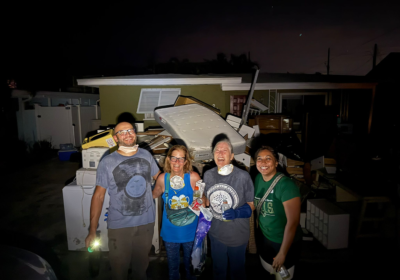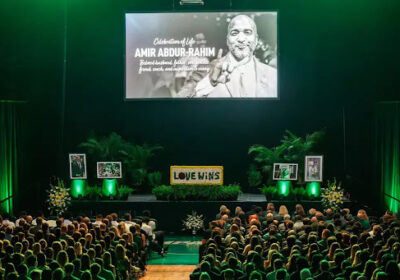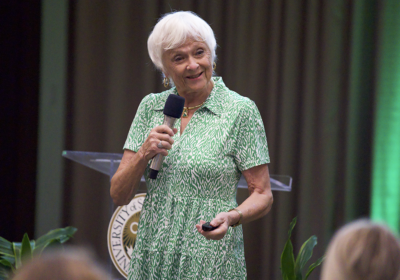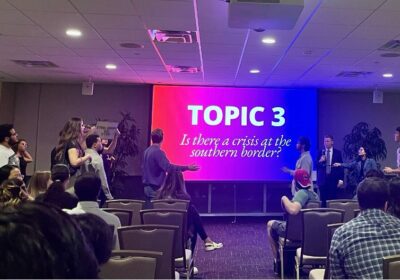Alumna draws visual textbook

SPECIAL TO THE ORACLE
When students buy a science textbook, they usually expect to see walls of crammed text.
A new textbook however, is attempting to present science more vividly.
Vanessa Ralph, a USF biomedical science graduate and high school chemistry teacher, is spending her time hand drawing a chemistry textbook stylized for people who prefer to learn visually.
“It’s chock-full of illustrations that help reiterate the point in a way that will make sense,” she said. “The problem with textbooks is they explain a concept over five or six pages of really small text that can be broken down into a sentence and an image.”
Eight months ago, Ralph began drawing “General Chemistry for Visual Learners – 10 Concepts to Mastery” for about three hours a night, translating material taught in most chemistry books into visuals. Her book is aimed at upper-level high school students and undergraduate students looking to supplement their class text.
“I’m able to read through the material and summarize what is and isn’t important,” she said.
The book’s approach is based on the psychological theory that people have different learning styles.
While some students learn better by listening to lectures and others prefer written explanations, Ralph said visual learners prefer seeing and thinking in pictures.
“(Visual learners) tend to learn better from bar graphs then instructions that are read to you,” Ralph said. “If someone reads instructions from IKEA to you, you tend to want to grab it and see the diagrams yourself.”
Beau McCall, a student majoring in biochemistry, said most of the Chemistry majors prefer the visual approach. It’s easier to understand the molecules visually in one’s own mind, he said.
“I like to be shown the structure (of the molecule) instead of hearing the name,” he said. “It will pop into my head — it’s just how my brain works.”
The educational reform Ralph said she advocates is drawn from her own experience as a high school chemistry teacher. She said once she began implementing tools for visual learners, many of her students found greater success in and love for science.
The idea for the book began when Ralph started making specialized notes for those of her students who needed visual engagement.
Ralph surveyed over 300 high school students and found they preferred her style of presenting information. Ralph’s colleagues also thought it would be a good idea to complement existing course materials for their students.
Ralph said the current model for education, which relies heavily on “mono-toned” lectures and written text, disproportionally favors auditory learners.
“The university structure where you have the professor front-and-center, with 300 students at a lecture hall is a very old-fashioned, outdated model for education,” she said.
Those who aren’t auditory learners have trouble processing and remembering information in traditional textbooks, and Ralph said the younger generation’s reliance on technology is likely increasing the number of people who won’t find traditional education engaging.
“As you are exposed to these technological interfaces, touch screens and such, you become more visually inclined,” she said. “So these already outdated models are going to become more inefficient.”
More information on Ralph’s textbook can be found on her Kickstarter page, which she set up to help fund the publication effort. Currently, about seven of the textbook’s 10 chapters are complete.







